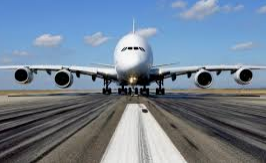TIANJIN, China — Airbus has opened a second jet assembly line in China as part of a broad effort to expand global production of its A320neo family, the company’s best-selling single-aisle aircraft. The new facility, located in the coastal city of Tianjin near Beijing, completes a network of ten final assembly lines worldwide, including two each in China and the United States.
The Tianjin line, which is expected to be fully operational in early 2026, will help Airbus raise its monthly output of A320-family aircraft from around 60 today to 75 by 2027. Airbus Chief Executive Guillaume Faury said the expansion “gives us the flexibility and capacity needed to meet record market demand and strengthen supply resilience.”
Parallel Expansion in the United States
The opening comes just one week after Airbus inaugurated a second assembly line in Mobile, Alabama — a coordinated move analysts say underscores the company’s strategy to distribute production between its largest markets while avoiding political sensitivities amid rising trade tensions.
Together, the two new sites are designed to give Airbus greater operational balance and insulation from potential supply disruptions or policy shifts between Washington and Beijing.
China Welcomes Investment, Emphasizes Cooperation
During a meeting in Beijing ahead of the Tianjin ceremony, China’s Commerce Minister Wang Wentao told Mr. Faury that “protectionist and unilateral measures” were undermining global trade stability. According to a ministry statement, Airbus reaffirmed its long-term commitment to China and pledged to deepen cooperation supporting China–France and China–EU economic relations.
At the factory inauguration, Chinese and European Union flags framed the event stage — a visual reflection of Airbus’s dual focus on industrial expansion and diplomatic equilibrium.
Balancing Global Ambitions
Industry observers note that the back-to-back openings in Tianjin and Mobile were timed to demonstrate Airbus’s global neutrality and strategic flexibility. “It’s a delicate balance,” said one European aerospace analyst. “Airbus needs to grow in both China and the United States without becoming entangled in either side’s trade disputes.”
The A320neo line competes directly with Boeing’s 737 MAX and China’s COMAC C919 — both currently produced at lower volumes. Airbus’s expansion, analysts say, positions it to maintain its lead in the narrow-body aircraft market for years to come.
A Global Production Push
With its worldwide network now spanning ten final assembly lines, Airbus has effectively completed its global production puzzle. The company says its goal is not only to meet soaring demand from airlines but also to ensure that future manufacturing growth remains diversified, sustainable, and less vulnerable to regional disruptions. (zai)

